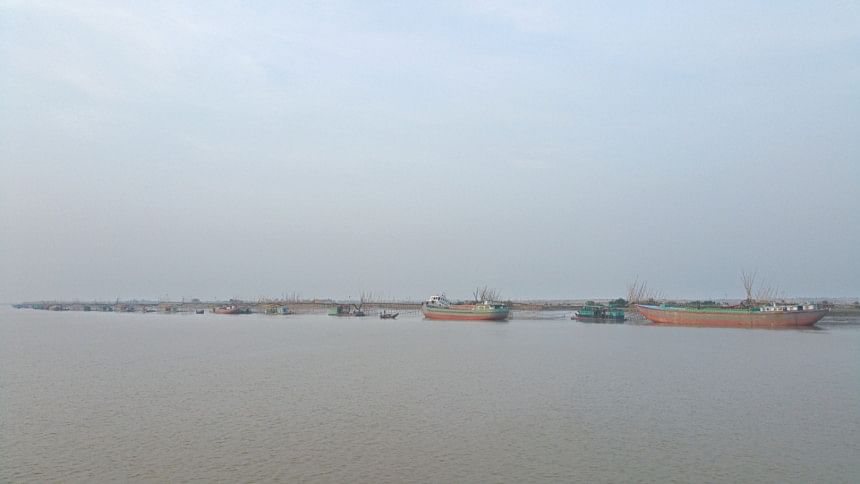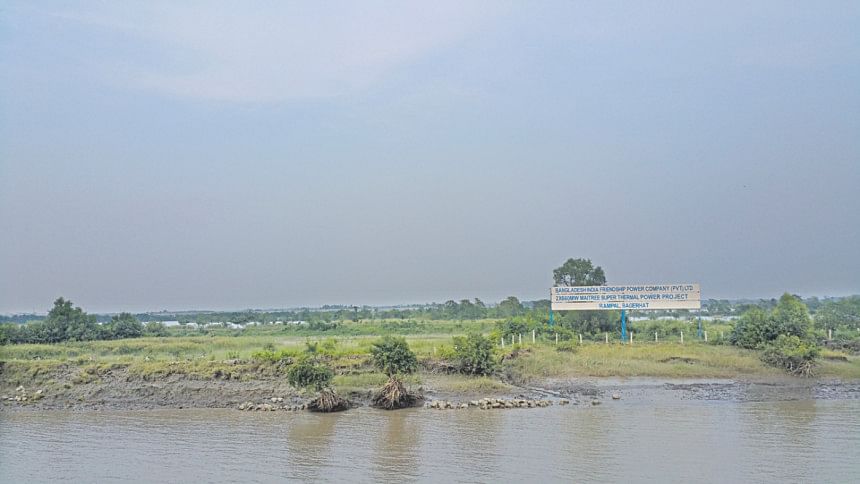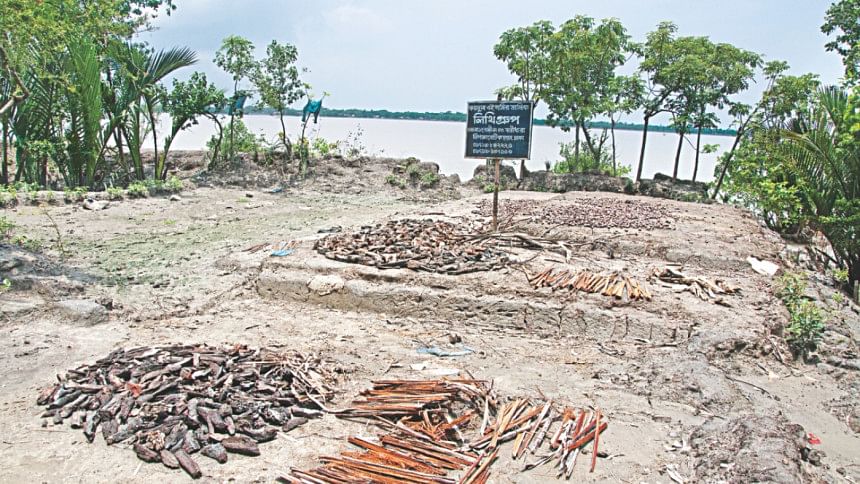Who cares about Sundarbans?

Floating down the Pasur river on a boat from Mongla towards Khulna any day, a visitor will come across hundreds of barges and launches anchored along the river banks. Thick steel pipes fixed to powerful pumps in these vessels disgorge silt and sand from the river bed to fill up the uneven plains and water bodies of the farmland on both banks.
As far as the eyes can see by the riverside, hundreds of signboards dot the area marking claims to demarcated plots. The new owners will build industrial complexes and use the Pasur river to bring in raw materials and send out finished products.
An LPG bottling plant infrastructure is almost finished along with a big private jetty that occupies part of the river. Its owner, Index LPG, has built a 6000-tonne LPG storage facility here.
Right in the middle of these brand-new “industrial plots” stands the massive project area of the Rampal 1320 megawatt coal-fired power plant project.

All of these industrial plots are within 14-16 km of the Sundarbans surrounding the Rampal plant site. Some of these small signboards inform passersby of future LPG facilities, others just have the name of the owning company.
It now looks like a planned industrial zone. But actually it is not. The Khulna Development Authority's Development Structure Plan 2011-2031 shows this area as “agricultural land” except for the Rampal plant site.
Officials told The Daily Star that only three out of these numerous industrial plot owners have permission from the government to set up industries there.
Environmentalists are concerned about various aspects of the Rampal project. Its risks include emission, pollution of the river, chemical contamination of the Sundarbans, transportation of coal by small ships to the coal power plant's site from the Bay of Bengal through the Sundarbans and many more. Environmentalists question the environmental impact assessment (EIA) for this project while the government keeps on defending the project saying it would not affect the Sundarbans.
The Rampal project at least has an EIA—questionable or not. And while the government appears to be adamant on implementing the project, it at least responds to public outcry.
But nobody seems to be concerned about these upcoming industries. When in operation, the industries may not release coal pollutants, but they would release chemicals and wastes into the rivers. They would need ships sailing through the Sundarbans. Thousands of people would have to stream in to work there and then, eventually, to settle around the area.

Over the years, since its first survey in British India, the Sundarbans has shrunk to about one-fourth of its first recorded size to encroachers. At the beginning of the British rule, the forest was spread over 43,252 square kilometres. When the British left India, it had shrunk to 37,813 square kilometres. Today, because of human encroachment, the one and only such place on the planet has shrunk to a mere 10,000 square kilometres – 6000 square kilometres in Bangladesh and 4000 square kilometres in India. With the industries making inroads, further encroachment and loss of area to human pressure is a very real danger. An IUCN report has expressed the same apprehension.
The Rampal plant would require a daily supply of 12,000 tonnes of coal. On an average, 1.5 such ships will ply through the Sundarbans carrying the coal and wakes of these ships may affect the unique forest of the world. The other new industries would also require cargo ships in the river daily.

The Mongla port gets to see a maximum of 100 ships a day. Industrialisation of this area, triggered by the presence of the Rampal plant would gradually increase the number of ships. The government has not done anything so far to prevent these industries from going into operation.
There has not been any environmental assessment of these activities. In addition to protecting the southwestern region from cyclone, the Sundarbans generates services worth US $273 to $714 million per year, says IUCN.

 For all latest news, follow The Daily Star's Google News channel.
For all latest news, follow The Daily Star's Google News channel. 



Comments